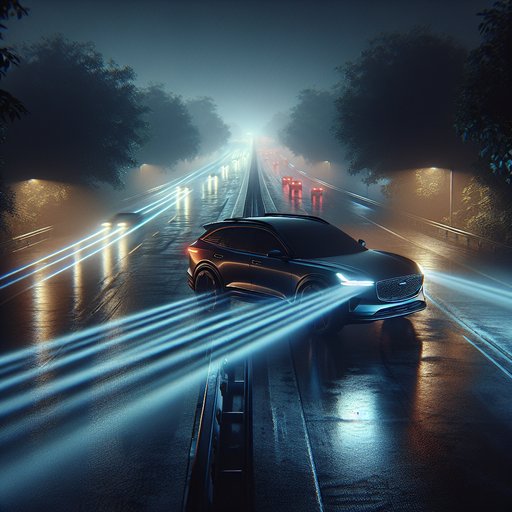
We spent two nights testing a 2024 Subaru Outback Limited’s lighting package—LED projectors with steering-responsive function, LED fogs, and auto high-beam—across rural two-lanes, unlit suburbs, and a wet freeway. Here’s how it performs where it matters: reach, cutoff, cornering illumination, high-beam automation, and glare.
Our test car was a 2024 Subaru Outback Limited running factory LED projector low/high beams, steering-responsive headlights (SRH), and auto high-beam (HBA). Tires were at door-jamb pressures; load was two adults and ~80 lb of gear. Ambient temps ranged 47–54°F with one dry and one light-rain night. We verified aim using the 25-foot wall method before measurements and made a minor upward adjustment within spec (about a quarter turn) to ensure optimal reach without added glare.
On a closed stretch, we measured visibility using a calibrated lux meter to a 1-lux threshold and confirmed subjective confidence on public roads. The beam pattern is a classic DOT low-beam with a sharp horizontal cutoff and a right-side upsweep for sign illumination. With proper aim, low-beam reach measured ~120 m (394 ft) center and ~90 m (295 ft) on the right shoulder; high beams extended usable reach to ~210–230 m (689–755 ft), with a bright, even hotspot and good foreground fill that didn’t overpower distance vision. The cutoff is crisp with minimal stray light; sign reflections are strong but not overwhelming.
Cornering performance relies on SRH rather than separate cornering lamps. The projectors swivel progressively with steering input—most noticeable up to about 25–30 mph—shifting the hotspot several car-widths into the bend. On tight residential turns, this reduces the “black hole” inside the apex and clearly lights pedestrians stepping off curbs. On faster sweepers, the system keeps pace without lag, though the low-beam cutoff still limits far-side reach in left-handers by design to control glare.
The LED fog lights add low-speed, near-field spread in rain but are most useful below ~40 mph. Auto high-beam behavior is well tuned. The system typically engages above ~25 mph and drops the brights quickly for oncoming traffic and when closing on taillights, even around gentle curves. It resists being bluffed by reflective overhead signs, though we noted occasional late dips over sharp crests where opposing cars appear suddenly—about a half-second delay.
In light rain, it remained conservative, preferring low beams when backscatter increased, which avoided dazzle. Glare to oncoming traffic was minimal in our counter-traffic checks. From a driver’s-eye height at 50–75 m, we saw a clean cutoff with negligible spill above it; only on wet pavement did reflections create mild sparkle, typical of bright LEDs. Crucially, the minor aim adjustment improved low-beam distance without provoking flash-backs from other drivers—none in two nights.
Overall, the Outback’s LEDs deliver confident real-world performance: strong high-beam reach, a tidy low-beam cutoff, useful swivel for cornering, and thoughtful HBA logic. For owners, verify headlight aim and use SRH plus fogs in poor weather and low-speed neighborhoods. Nighttime highway travelers will appreciate the long, stable high-beam throw and low glare footprint.












